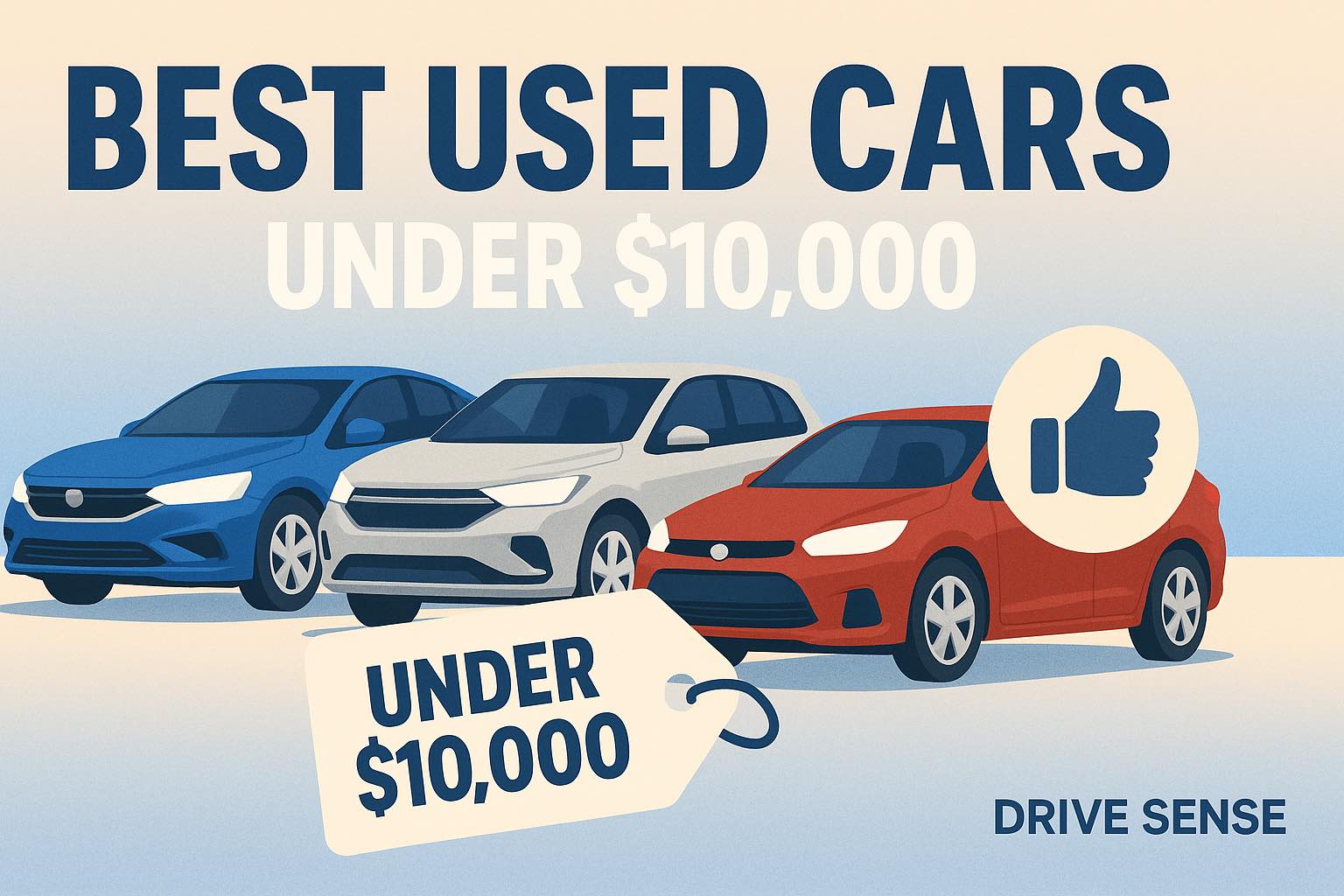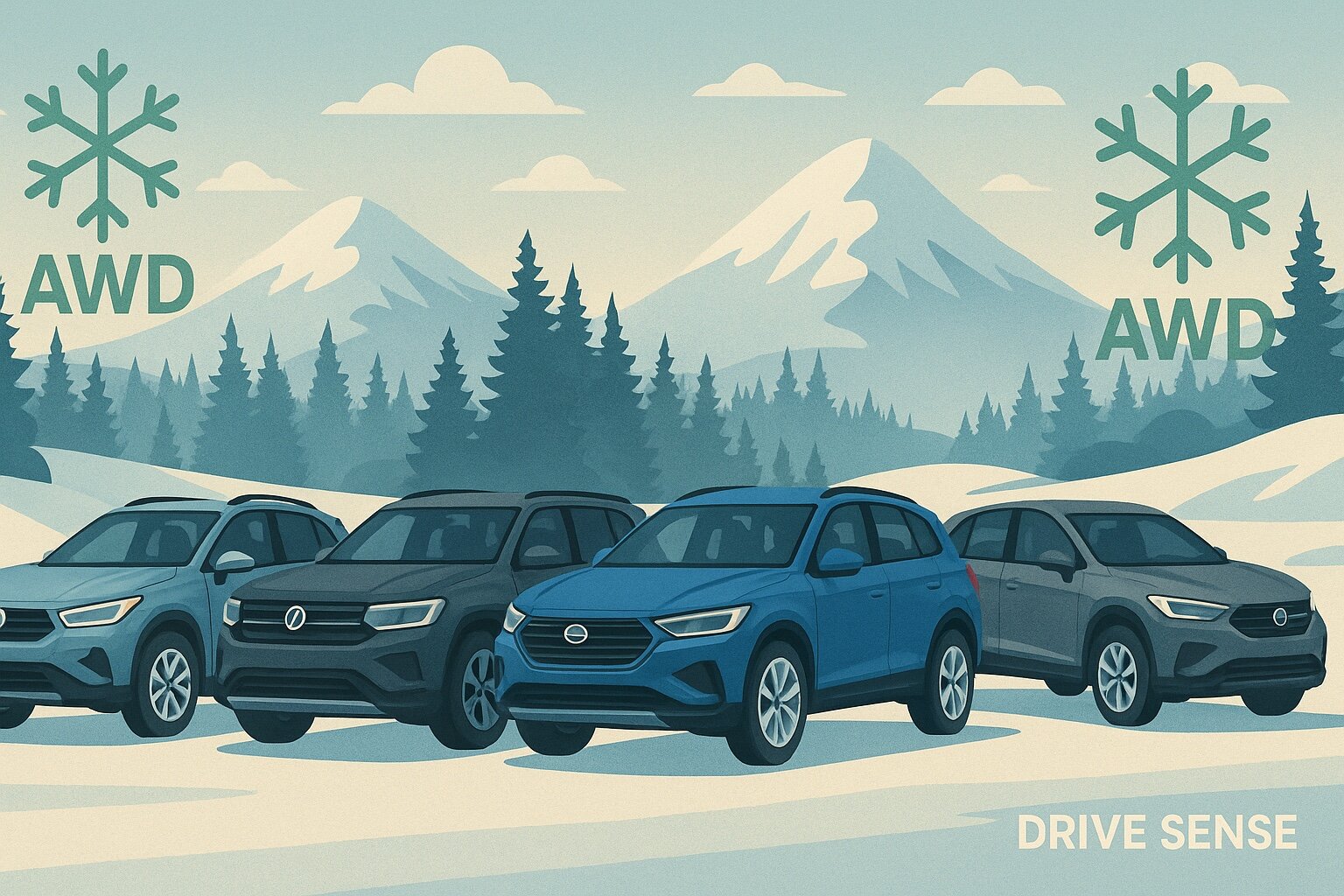Finding Gems in the $10,000 Universe
Hunting for a used car under $10,000 in 2025 is like combing a crowded swap meet: bargains, duds, and the occasional hidden treasure. As an automotive journalist cruising the sprawling streets of Los Angeles, I’ve seen what this city’s freeways and neighborhoods do to a car’s soul. Sun-faded paint, worn seat bolsters, and odometers that have circled the globe—used cars here have stories. But the best ones, the real survivors, keep moving forward with a blend of reliability, practicality, and a dash of charm. So, if you’re looking to stretch your dollar without driving something that feels like a punishment, here are my top picks—and how they actually feel to live with, not just to read about.
Honda Civic (2012–2015): The Friendly Overachiever
Let’s start with the Honda Civic. It’s the perennial “you can’t go wrong” answer, and for good reason. For under $10,000 in 2025, you’ll mostly find ninth-generation models (2012–2015), often with around 100,000–130,000 miles. On paper, these Civics don’t set your pulse racing: most pack a 1.8-liter four-cylinder with 140 horsepower, mated to either a five-speed automatic or manual. But behind the wheel, it’s the Civic’s lightness and predictability that win you over—steering that’s direct without being darty, brakes that inspire confidence, and a suspension tuned for LA’s pockmarked roads. The faint hum of that little engine is more reassuring than thrilling, but there’s a satisfaction in how little drama it brings.
Inside, the Civic’s two-tier dashboard feels quirky at first, but there’s a method to its madness—digital speed readouts right in your sightline, chunky climate knobs that satisfy with each click, and enough cubbies for city living. Technology is basic (Bluetooth was not standard until later years), but reliability is nearly bulletproof. Compared to rivals like the Ford Focus or Hyundai Elantra, the Civic feels less plush but more durable. Downsides? Road noise is noticeable at highway speeds—definitely louder than a Toyota Corolla from the same era—and acceleration is modest. But if you want something to outlast your next lease, few options beat it.
Toyota Corolla (2012–2016): The Quiet Perfectionist
The Toyota Corolla is the car equivalent of your friend who never misses a dentist appointment. Unflashy, yes, but relentlessly reliable. For under $10K, you’re shopping the 10th and early 11th generations (2012–2016), usually with Toyota’s steadfast 1.8-liter engine and a four-speed automatic—a transmission that feels almost antique in 2025, but will probably survive an asteroid impact. The Corolla’s ride is softer than the Civic’s; LA potholes disappear with less fuss, and wind noise is surprisingly well-contained for a car in this price range. There’s a serenity to the way it filters out the chaos of Wilshire Boulevard.
Inside, there’s little to excite: hard plastics abound, and tech features are sparse unless you find an S or LE Plus trim. But every switch and button has a reassuring click, and maintenance costs are famously low. The Corolla isn’t for driving enthusiasts—it leans in corners and steering is numb compared to a Mazda3—but as an everyday companion, it’s a quiet achiever. Speaking of competitors, the Mazda3 offers more fun and style but may cost more to maintain as it ages.
Ford Fusion (2013–2016): The Grown-Up Sedan
If you want something with a little more presence—think: not just getting to work, but looking good doing it—the Ford Fusion is hard to ignore. These mid-size sedans can be found for well under $10,000, especially in SE trim with the 2.5-liter four-cylinder engine (175 hp). From the driver’s seat, the Fusion feels solid and composed. There’s more heft to the steering than in a Civic or Corolla; it corners with confidence and soaks up freeway expansion joints with a muted thud instead of a rattle.
Design-wise, the Fusion punches above its weight: sleek lines, Aston Martin-inspired grille, and an interior that feels more upscale than its price tag suggests. I’m a fan of the tactile climate controls and the way the SYNC infotainment system (when equipped) responds quickly—though some earlier versions can be buggy. Rear seat space and trunk capacity are generous for road trips or Ikea runs. Downsides? Fuel economy isn’t quite as stellar as some compacts (expect low 20s city, mid-30s highway), and long-term reliability can be hit or miss compared to Toyota and Honda—so check service records closely.
Mazda3 (2014–2017): The Driver’s Delight
For those who refuse to let a budget kill their driving joy, the Mazda3 stands out. Around $10K lands you an early third-generation model (2014–2017), usually with the Skyactiv 2.0-liter engine (155 hp). The Mazda3 is a reminder that affordable cars can still feel special: steering is light yet communicative, and there’s a nimbleness that makes even mundane commutes feel lively. The manual transmission is a rare treat—snickety-snick shifts and a clutch pedal that’s just right—but most examples are automatics.
Inside, Mazda’s minimalist design shines: soft-touch materials up top, a crisp infotainment screen perched on the dash (think mini-BMW), and clicky rotary controls that feel far more expensive than they are. Rear seat space trails the Fusion and Civic, and cargo room is average for hatchbacks—but I’d trade that for style and engagement any day. Compared to a Corolla, the Mazda3 is louder on rough pavement and may require pricier parts as it ages, but it rewards every drive.
Hyundai Elantra (2014–2017): The Value King
If you want modern features on a shoestring budget, put the Hyundai Elantra on your radar. You’ll find sixth-generation sedans (and some hatchbacks) for less than $10K, usually with reasonable mileage. Most come with a 1.8-liter or 2.0-liter four-cylinder engine—neither thrilling nor sluggish—and a smooth six-speed automatic. The Elantra feels lighter on its feet than you might expect; steering is responsive enough for LA’s tight parking garages and quick lane changes on the 405.
Inside, Hyundai packed in features: touchscreen infotainment (on many trims), Bluetooth, backup camera—even heated seats if you’re lucky. Materials aren’t as plush as a Mazda3 or Fusion, but build quality has improved a lot from earlier Hyundais. The Elantra rides firmer than a Corolla but handles curves with more poise. One thing I noticed: road noise creeps in above 65 mph—a common trait among budget compacts. Reliability has generally been solid, though earlier models had some engine issues; check for recalls and service history.
Subaru Impreza (2013–2016): All-Weather Confidence
For Angelenos who hit the mountains or anyone in snowier climates, the Subaru Impreza brings something unique: standard all-wheel drive. Most models in this price range are sedans or five-door hatchbacks with a 2.0-liter boxer engine (148 hp). Power is modest—think more steady plodder than sprinter—but grip is tenacious. There’s a faint boxer thrum at idle and a subtle vibration through the wheel at stoplights—a reminder you’re driving something different.
Cabin materials are straightforward and rugged; tech features depend on trim but are rarely flashy at this price point. The Impreza’s ride is firmer than a Corolla but soaks up rough pavement with composure. Fuel economy is decent for an AWD car (mid-20s city, low-30s highway), but expect higher maintenance costs and potential oil consumption issues—something to watch for on higher-mileage examples. Against rivals like the Civic or Elantra, Subaru’s main draw is weather capability and hatchback versatility.
Honorable Mentions and Wildcards
There are other contenders worth a look if you want something different or need specific features:
Honda Fit (2013–2017): Unmatched cargo flexibility in a tiny package; great fuel economy but noisy on freeways.
Toyota Prius (2010–2014): Bulletproof hybrid tech and insane MPG; higher miles likely at this price but worth considering for commuters.
Kia Soul (2014–2017): Funky design, roomy interior; quirky ride but tons of personality.
Nissan Sentra (2014–2017): Quiet and roomy, though driving dynamics are bland compared to Mazda3 or Civic.
The Real-World Verdict: Which Should You Buy?
If you want a car that will start every morning and fade into the background of your life—in a good way—the Toyota Corolla or Honda Civic are hard to beat. They’re less exciting than some rivals but make up for it in durability and low running costs. If you crave driving enjoyment or style, lean toward a Mazda3 or Ford Fusion. Need all-weather capability? Subaru Impreza is your answer—but check for oil leaks and service records first. For those prioritizing features and value above all else, Hyundai Elantra delivers modern tech at bargain prices.
No matter which path you take in this crowded used-car market, keep your expectations grounded: at $10K in 2025, you’re shopping older models with some stories to tell and miles under their belt. But with careful shopping—and maybe a little luck—you can find a trusty companion for LA commutes or cross-country adventures alike. Just remember: always get a pre-purchase inspection. Even the best bargains can hide secrets in their sun-baked paint or under the hood. Happy hunting—I’ll see you on the road.

